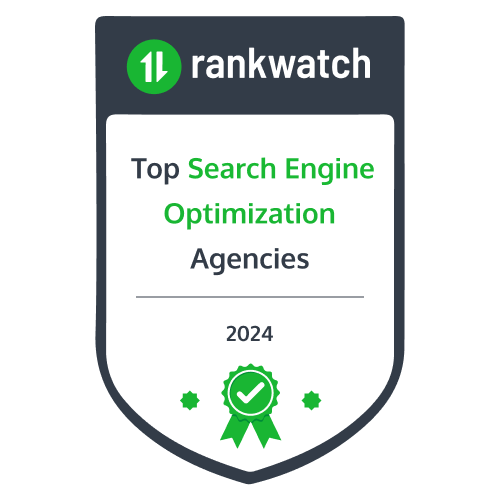Businesses often find themselves caught between two competing priorities: achieving immediate results and building lasting brand equity. While paid advertising and social media campaigns can deliver quick wins, search engine optimization (SEO) represents a fundamentally different approach. The one that prioritizes long-term brand building over short-term gains. The relationship between SEO and branding extends far beyond simple keyword rankings, but goes to SEOs’ ability to create a synergistic effect that compounds over time to establish sustainable competitive advantages.
The Foundation of Digital Brand Authority
SEO serves as the cornerstone of digital brand authority by establishing a company’s presence in the spaces where potential customers actively seek solutions. Unlike traditional advertising that interrupts consumers during unrelated activities, SEO positions brands exactly where intent meets opportunity. When a business consistently appears in search results for relevant queries, it creates repeated exposure that builds familiarity and trust, two essential components of strong brand recognition.
This organic visibility carries inherent credibility that paid advertisements cannot replicate. Users inherently trust organic search results more than sponsored content, viewing top-ranking pages as authoritative sources rather than promotional materials. This trust advantage becomes particularly valuable in industries where credibility directly impacts purchasing decisions, such as healthcare, financial services, and professional consulting.
The cumulative effect of this exposure creates what marketers call “brand lift”—the measurable increase in brand awareness, consideration, and preference that occurs when consumers encounter a brand repeatedly across multiple touchpoints. SEO amplifies this effect by ensuring consistent visibility across thousands of relevant search queries, creating a broad foundation of brand recognition that supports all other marketing initiatives.
Establishing Thought Leadership Through Content
SEO-driven content strategies naturally position brands as thought leaders within their industries. The process of creating content that’s comprehensive, valuable content that ranks well in search engines requires companies to develop deep expertise and share genuine insights with their audience. This content creation process forces organizations to articulate their unique perspectives, demonstrate their knowledge, and provide real value to potential customers.
Thought leadership content that ranks highly in search results serves multiple branding functions simultaneously. It attracts qualified traffic from users seeking information rather than immediate sales, creating opportunities to build relationships before purchase decisions occur. This early-stage engagement allows brands to influence customer perceptions and establish preference through platforms like Flipsnack interactive lead generation tool, which helps convert passive readers into active prospects by embedding forms, CTAs, and trackable elements directly into digital content, driving measurable engagement long before competitors enter the conversation.
The long-term value of thought leadership extends beyond immediate lead generation. Industry publications, journalists, and other businesses frequently reference and link to authoritative content, creating a network effect that amplifies brand visibility across the entire industry ecosystem. These organic mentions and citations build domain authority while simultaneously reinforcing brand reputation and expertise.
Building Trust Through Consistent Digital Presence
Trust remains the most valuable currency in digital marketing, and SEO provides multiple pathways for building and maintaining this trust over time. Consistent appearance in search results for relevant queries creates a sense of reliability and permanence that temporary advertising campaigns cannot match. Customers develop confidence in brands they encounter repeatedly during their research process, viewing consistent search visibility as evidence of stability and market leadership.
The quality signals that contribute to search engine rankings also serve as trust indicators for human visitors. Fast-loading websites, mobile-friendly designs, secure connections, and high-quality content all contribute to both search performance and user confidence. This alignment between technical SEO requirements and user experience best practices creates a virtuous cycle where improvements in one area enhance the other.
Local SEO strategies further strengthen trust by connecting brands with their immediate communities. Consistent business information across online directories, positive customer reviews, and local content creation all contribute to both search visibility and community reputation. This local connection becomes particularly valuable for businesses that rely on geographic proximity to their customers.
Long-Term Cost Efficiency and Sustainable Growth
While SEO requires significant upfront investment in strategy, content creation, and technical implementation, its long-term cost efficiency provides substantial advantages for brand building. Unlike paid advertising that requires continuous budget allocation to maintain visibility, well-executed SEO strategies continue generating traffic and brand exposure long after the initial investment.
This sustainability creates opportunities for brands to allocate resources toward innovation and expansion rather than constantly funding basic visibility initiatives. Companies with strong organic search presence can invest their marketing budgets in exploring new markets, developing new products, or enhancing customer experience rather than competing for the same advertising inventory as their competitors.
The compound nature of SEO benefits means that early investments in content creation and technical optimization continue paying dividends years later. Evergreen content that ranks highly for relevant queries can generate consistent traffic and brand exposure for extended periods, creating a valuable asset that appreciates rather than depreciates over time.
Competitive Differentiation Through Organic Visibility
Strong SEO performance creates natural barriers to entry that protect market position while enhancing brand differentiation. Competitors must invest significantly more resources to displace established organic rankings than to compete in paid advertising auctions. This dynamic creates sustainable competitive advantages that become increasingly difficult to overcome as market leaders strengthen their positions.
The relationship between SEO and competitive differentiation extends beyond simple ranking positions. Companies that invest in comprehensive SEO strategies typically develop deeper understanding of their target audiences, more sophisticated content creation capabilities, and stronger technical infrastructure. These operational improvements enhance overall business performance while creating additional barriers for competitors to match.
Market leaders who establish strong organic visibility also gain valuable competitive intelligence through their SEO analytics. Understanding which keywords drive qualified traffic, how users navigate through their content, and what topics generate the most engagement provides insights that inform product development, marketing strategy, and business expansion decisions.
Brand Recall and Customer Journey Integration
SEO creates multiple touchpoints throughout the customer journey, each contributing to brand recall and preference development. Users who encounter a brand during initial research phases, find detailed information during consideration, and discover relevant case studies during decision-making develop stronger brand associations than those exposed to single-point advertising messages.
This multi-touchpoint exposure creates what psychologists call “mere exposure effect”—the tendency for people to develop preferences for things they encounter frequently. SEO amplifies this effect by ensuring brand visibility across numerous relevant search queries, creating repeated exposure that builds familiarity and preference over time.
The integration of SEO with other marketing channels creates synergistic effects that amplify overall brand impact. Users who encounter a brand through organic search results are more likely to recognize and respond to the same brand’s social media content, tool for email campaigns, or traditional advertising. This cross-channel reinforcement strengthens brand recall and increases the effectiveness of all email campaigns and marketing investments.
Reputation Management and Crisis Resilience
Strong SEO performance provides valuable protection against reputation challenges and crisis situations. Supplement that with relevant backlinks. Brands with robust organic visibility can influence the narrative around their company by ensuring positive, accurate information appears prominently in search results. This proactive approach to reputation management prevents negative information from dominating search results while providing platforms for addressing concerns directly.
The content assets created through SEO strategies serve as authoritative sources that search engines prioritize when users seek information about the brand. Company blogs, resource pages, and thought leadership content often rank highly for branded search queries, giving organizations direct control over the information users encounter during their research process.
This reputation control becomes particularly valuable during crisis situations when stakeholders seek reliable information about company responses, policies, or changes. Established content platforms with strong search visibility provide immediate channels for communicating accurate information while preventing misinformation from gaining prominence in search results.
Measurable Brand Metrics and Attribution
SEO provides numerous opportunities to measure brand impact through both traditional metrics and advanced attribution modeling. Branded search volume, direct traffic increases, and organic mention tracking all provide insights into brand health and recognition growth. These metrics complement traditional brand awareness surveys while providing more frequent and actionable feedback.
The relationship between SEO performance and brand metrics creates opportunities for sophisticated attribution analysis. Companies can track how organic search exposure influences brand preference, purchase consideration, and customer lifetime value. This data-driven approach to brand measurement enables more strategic decision-making about resource allocation and campaign optimization.
Advanced analytics platforms now provide tools for understanding the full customer journey impact of SEO initiatives. Multi-touch attribution models can demonstrate how organic search exposure influences conversions that occur through other channels, providing more complete pictures of SEO’s contribution to overall brand performance.
Future-Proofing Brand Digital Presence
The evolving nature of search technology and user behavior requires brands to maintain adaptable SEO strategies that can respond to changing market conditions. Voice search, artificial intelligence, and mobile-first indexing all represent significant shifts in how users discover and interact with brands online. Companies with strong SEO foundations can adapt to these changes more effectively than those relying solely on paid advertising or social media.
The skills, processes, and technical infrastructure developed through comprehensive SEO programs provide valuable capabilities for navigating future digital marketing challenges. Content creation expertise, technical optimization knowledge, and data analysis capabilities all transfer to emerging platforms and technologies, ensuring that SEO investments continue providing value as the digital landscape evolves.
Conclusion
The long-term benefits of SEO for branding extend far beyond traditional metrics of traffic and rankings. By establishing sustainable digital authority, building trust through consistent presence, and creating multiple touchpoints throughout the customer journey, SEO provides a foundation for brand growth that compounds over time. The strategic integration of SEO with broader branding initiatives creates synergistic effects that amplify the impact of all marketing investments while building competitive advantages that become increasingly difficult for competitors to overcome.
Success in modern digital marketing requires balancing immediate performance needs with long-term brand-building objectives. SEO provides the perfect vehicle for achieving this balance by delivering measurable results that contribute to sustainable brand growth. Companies that invest in comprehensive SEO strategies position themselves for continued success in an increasingly competitive digital marketplace while building valuable assets that appreciate over time.
The question for modern businesses is not whether to invest in SEO for branding, but how quickly they can implement comprehensive strategies that begin building these long-term competitive advantages. The brands that recognize and act on this opportunity today will establish the digital authority and market position that defines industry leadership for years to come.




